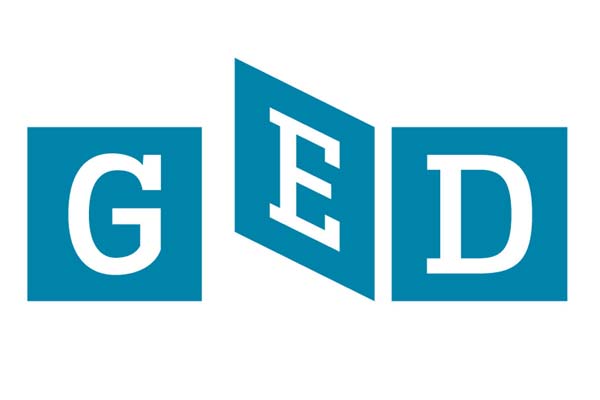GED: Your Success Guide to Earning a High School Diploma
The GED test comprises four subject exams assessing high school-level academic abilities. It targets those seeking an equivalency credential due to unfinished high school education.
The four subject tests include math, science, social studies, and reasoning through language arts.
The GED test is accepted by 97% of colleges and employers in the United States, making it a valuable credential for individuals looking to further their education or career. The test is paper-based and computer-based, and accommodations are available for individuals with disabilities.
The GED Testing Service, a collaboration between the American Council on Education and Pearson, develops and administers the GED test. This test has enabled over 20 million individuals globally to earn a GED credential, opening doors to higher education and successful careers.
The GED test empowers people to enhance their lives and accomplish their aspirations through education.
Understanding the GED Test
The GED test comprises four subject exams assessing high school-level academic proficiency. Successfully passing awards test-takers a high school diploma equivalent, unlocking avenues for advanced education and improved career opportunities.
GED Test Subjects
The GED test includes four subjects: Mathematical Reasoning, Reasoning Through Language Arts, Science, and Social Studies. Each subject test is completed individually, and test-takers can select the subjects and timing.
The tests for Mathematical Reasoning and Reasoning Through Language Arts have a duration of 115 minutes, while the Social Studies and Science tests last 90 minutes.
The Mathematical Reasoning test measures quantitative and algebraic problem-solving skills, while the Reasoning Through Language Arts test measures reading comprehension, writing, and critical thinking skills.
The Social Studies test covers civics and government, economics, geography, and history, while the Science test covers life science, physical science, and earth and space science.
Scoring System
The GED test is scored on a scale of 100-200, with a minimum passing score of 145 in each subject test. Test-takers who score between 145-164 on a subject test receive a high school equivalency diploma, while those who score between 165-174 receive a college-ready score. Test-takers who score between 175-200 receive a college-ready+credit score, which may qualify them for college credits.
🌟 Hey Students! 🚀 Ready for the ultimate experience? Join us on Studentsinside.com's Facebook, YouTube, WhatsApp, and LinkedIn. Click now for tips, fun, and success vibes! 🌈✨ #StudentLife #JoinUs
The GED test is computer-based and uses a combination of multiple-choice questions, short answer questions, and essay questions. The points earned in each section are scored, not the number of questions answered correctly.
GED Testing Service
The GED Testing Service oversees the GED test, a collaborative effort between the American Council on Education and Pearson VUE.
Individuals can sign up for the GED test online or in person at an official test center. Special arrangements are provided for test-takers with disabilities.
Preparation for the GED
Preparing for the GED exam can seem daunting, but anyone can succeed with suitable study materials, practice tests, and preparation tips. This section covers the essential components of GED preparation, including study materials, practice tests, and tips for success.
Study Materials
There are many study materials available to help prepare for the GED exam. Some popular options include GED study guides, online courses, and textbooks. When choosing study materials, it’s essential to find up-to-date ones and cover all the exam topics.
One excellent resource is the official GED website, which offers free study materials, including practice tests and study guides. Other options include online courses from reputable sources, such as Khan Academy and Udemy.
GED Practice Test
Taking practice tests is one of the most effective ways to prepare for the GED exam. Practice tests help identify areas where more study is needed and help build confidence before taking the exam.
The official GED website offers a free practice test, GED Ready, which provides a personalized study plan based on the results. Other options include practice tests from reputable sources, such as Kaplan and McGraw-Hill.
Preparation Tips
In addition to study materials and practice tests, some tips can help ensure success on the GED exam. These include:
- Setting a study schedule and sticking to it
- Breaking up study sessions into manageable chunks
- Practicing time management during practice tests
- Focusing on areas of weakness
- Getting enough rest and exercise before the exam
GED Test Schedule
How to Schedule Your Test
Scheduling your GED test is a straightforward process. To schedule your test:
- Log into your GED account and select whether you will take the test at a test center or with online proctoring.
- Select the test subjects you want to participate in and choose a convenient day and time.
- Make your test payment online with a credit or debit card. If you lack these, American Express Bluebird is also an option.
If you’d instead schedule your test in person, click “Schedule at a Test Center” and follow the prompts to pick your preferred language and subject. Then, choose the GED test subjects you want to take.
You must note that you can complete only some portions of the test within a specific period. You can take each subject test at your own pace if you complete all four subjects within two years.
Online Proctor
Opting for the online proctored GED test requires scheduling within 60 days of achieving a “green” score on a GED Ready practice test. On your test day, log in to GED.com 30 minutes before your appointment, initiating the test following on-screen guidelines for check-in, system check, I.D., and workspace validation.
Maintain a dependable internet connection and a calm, focused setting throughout the test. Contact the GED Testing Service for technical support if issues arise during your exam.
GED Classes
GED classes help individuals prepare for the test and earn their high school equivalency diploma. Depending on the individual’s preferences and schedule, these classes can be in-person or online.
In-person Classes
In-person GED classes are typically offered at local community colleges, adult education centers, and other educational institutions.
These classes provide a structured learning environment with a teacher who can answer questions and provide guidance. In-person classes also offer opportunities for students to interact with their peers and form study groups.
In-person classes offer the benefit of instant feedback on student’s progress and areas requiring improvement. Additionally, these classes often provide access to learning materials like textbooks, workbooks, and practice tests.
Online Classes
Online GED classes are convenient for individuals who prefer to study from home or have a busy schedule. These classes are typically self-paced, meaning students can quickly work through the material. Online classes may also offer interactive features like videos, quizzes, and discussion forums.
Online classes offer the benefit of accessibility from any location with an internet connection. This empowers students to learn at their preferred pace and convenience. Moreover, online classes often present a cost advantage over in-person alternatives, eliminating the need for students to commute to a physical venue.
However, online classes may not be suitable for individuals who require more structure and guidance. Online classes also need access to a computer and an internet connection, which may be a barrier for some students.
GED Test Subjects
The GED test comprises four subjects, each divided into distinct exams: Mathematical Reasoning, Science, Social Studies, and Reasoning Through Language Arts. It is structured to assess knowledge and skills equivalent to a high school education.
Math
The Mathematical Reasoning test measures a candidate’s ability to solve problems, interpret data, and apply mathematical concepts. It covers topics such as basic math, geometry, basic algebra, graphs, and functions.
The test includes both multiple-choice questions and constructed-response questions. Candidates are allowed to use a calculator during the test.
Science
The Science test measures a candidate’s understanding of science concepts, principles, and theories. It covers life science, physical science, and earth and space science. The test includes multiple-choice questions and constructed-response questions.
Social Studies
The Social Studies test measures a candidate’s understanding of social studies concepts and principles. It covers U.S. history, world history, civics, government, economics, and geography. The test includes multiple-choice questions and constructed-response questions.
Reasoning Through Language Arts
The Reasoning Through Language Arts exam assesses a person’s comprehension of written content, evaluating arguments, and expressing ideas effectively.
It encompasses areas like reading comprehension, grammar, and writing. The assessment consists of both multiple-choice and constructed-response queries.
GED for Non-English Speakers
For non-native English speakers, the GED test can be a daunting task. However, with proper preparation and resources, passing the test and obtaining a High School Equivalency Diploma is possible.
GED in Spanish
The GED test is offered in Spanish for those who speak the language. The GED en Español exam assesses proficiency in four subjects identical to the English version: Math, Social Studies, Science, and Reasoning Through Language Arts. It evaluates abilities and knowledge on par with high school graduates.
Several resources are available to prepare for the GED en Español test. The following are some of the most popular resources:
- GED classes in Spanish: Many adult education programs offer GED classes in Spanish. These classes are designed to help students prepare for the GED test and are taught by bilingual instructors.
- GED study guides in Spanish: Several are available in Spanish. This study suggests covering all four subjects and including practice tests to help students prepare for the exam.
- GED practice tests in Spanish: Online GED practice tests are accessible, aiming to replicate the genuine GED exam experience. They serve as effective tools to evaluate your exam preparedness.
GED Versus Other Tests
GED versus ACT
The GED and ACT (American College Testing) are standardized tests assessing academic skills. However, there are some critical differences between the two tests.
The GED is designed for individuals who did not complete high school and want to earn a high school equivalency diploma, while the ACT is primarily used for college admissions.
The GED covers four subject areas – language arts, mathematics, social studies, and science – and is designed to test high school-level academic skills. The ACT, on the other hand, covers English, mathematics, reading, and science and is designed to test college readiness.
Another critical difference between the two tests is their format. The GED is a computer-based test, while the ACT is a paper-based test. The GED is a seven-hour test, while the ACT takes around three hours to complete.
GED versus SAT
The GED and SAT (Scholastic Assessment Test) are standardized tests assessing academic skills. However, there are some significant differences between the two tests.
The GED is designed for individuals who still need to complete high school and want to earn a high school equivalency diploma, while the SAT is primarily used for college admissions.
The GED covers four subject areas – language arts, mathematics, social studies, and science – and is designed to test high school-level academic skills. Conversely, the SAT covers reading, writing and language, and mathematics and is intended to test college readiness.
Another critical difference between the two tests is their format. The GED is a computer-based test, while the SAT is a paper-based test. The GED is a seven-hour test, while the SAT takes around three hours to complete.
Benefits of the GED
Individuals earning a GED diploma can enjoy numerous benefits that enhance their career and educational opportunities.
College Admissions
One of the most significant benefits of earning a GED diploma is that it can help individuals gain college admission. While a high school diploma is a traditional path to college, many colleges and universities accept GED graduates.
In fact, according to GED.com, around 98% of colleges and universities in the United States accept GED graduates.
Furthermore, earning a GED diploma can open up new educational opportunities for individuals who may not have been able to attend college otherwise.
With a GED diploma, graduates can pursue various degree programs and career paths that may have been available to them with a high school diploma or GED.
Employment Opportunities
Obtaining a GED diploma enhances job prospects by meeting the education criteria set by many employers. This credential showcases fundamental skills and workplace aptitude, fulfilling the requirement for a high school diploma or GED that employers often seek.
According to Essential Ed, individuals who earn a GED diploma can earn up to $9,000 more per year than those without a high school diploma or GED. Additionally, GED graduates may be eligible for a wider range of jobs and career paths, including those that require a high school diploma or equivalent.
Additional Resources
For those preparing to take the GED test, many additional resources are available to help them succeed. These resources can include study guides, practice tests, and online courses. Here are some of the most valuable resources available:
American Council on Education (ACE)
The GED test was developed by the American Council on Education (ACE), making them a valuable asset for test takers. Their website offers abundant information on the exam, encompassing study materials, practice tests, and effective strategies.
Pearson
Pearson is the company that administers the GED test. They offer a variety of resources to help test-takers prepare, including study guides, practice tests, and online courses. Pearson’s website also provides information about test-taking strategies and tips for success.
Additional Resources
Many additional resources are available to help test-takers prepare for the GED test. These can include online courses, study guides, and practice tests. Some popular resources include:
- GED.com: The official website for the GED test, which offers study guides, practice tests, and information about test-taking strategies.
- Khan Academy: An online education platform that provides free courses in mathematics, science, and GED test subjects.
- GED Testing Service: A website that offers study guides, practice tests, and information about test-taking strategies.
FAQs
Here are some frequently asked questions about additional resources for the GED test:
- Q: Are any free resources available to help me prepare for the GED test?
- A: Yes, many free resources are available, including online courses and practice tests.
- Q: Do I need to purchase a study guide to prepare for the GED test?
- A: No, a study guide is not required, but it can be a helpful resource for many test-takers.
- Q: Are online courses suitable for preparing for the GED test?
- A: Yes, online courses can be a great way to prepare, especially for those who prefer to study at their own pace.
Conclusion
In conclusion, obtaining a high school equivalency diploma through the GED test is a great way to improve one’s eligibility for jobs and higher education. While it may not be the same as a traditional high school diploma, it is a recognized equivalent and can open doors to opportunities that may have otherwise been closed.
Through the GED test, individuals can improve their skills in mathematical reasoning, social studies, science, and reasoning through language arts.
The extended response portion of the test, also known as the GED essay, requires individuals to write an argumentative essay in 45 minutes.
It is important to note that the essay should not be based on personal opinions but rather on the given topic and supporting evidence.
Thanks to the accessibility of online testing and webcams, people can now complete the GED test from their homes.
This accommodates those who require extra time or resources for traditional classes, enabling them to attain their high school equivalency diploma.








